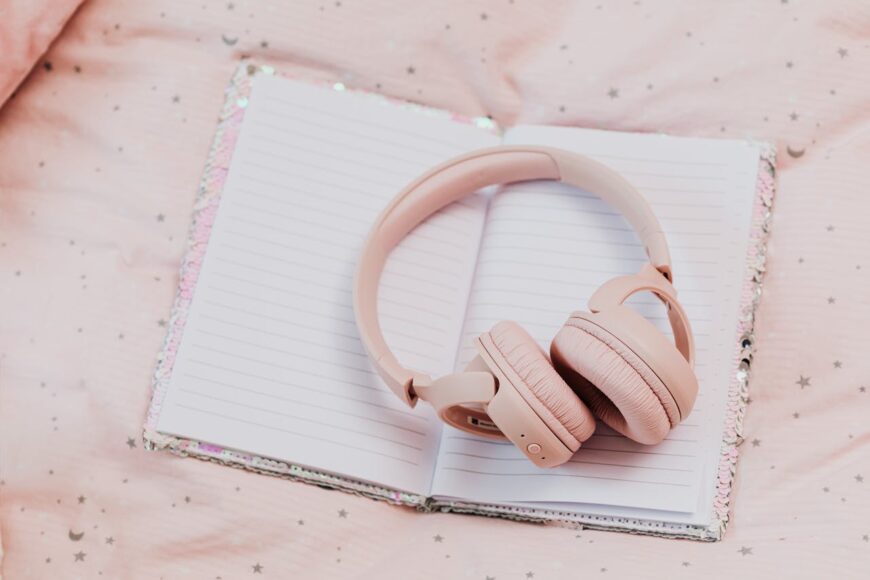Lesson 4: The Power of Sound in Structured Rests
Sound is one of the most powerful tools for helping the nervous system shift into a state of restoration. But have you ever noticed that lying in silence can sometimes make rest feel harder? Instead of relaxing, your mind keeps racing, or your body feels tense and unsettled.
That’s because rest isn’t just about stopping activity – it’s about guiding your system toward safety. The right sounds – whether soft instrumental music, nature sounds, or a guided meditation – can act as an anchor, helping your system settle and your brain begin to rewire.
💗 Rest is not something you must earn — it is something your system will remember how to receive.
💗 Before continuing, I invite you to experience this firsthand. Even just a few minutes of Structured Rest can begin shifting your system toward ease. Click play below to try some gentle instrumental music →
💡 Your Mindbody system learns through experience—so let’s begin.
A Short Structured Rest with Music
Now that you’ve had a chance to experience a brief Structured Rest with soft music, let’s explore why sound is such a powerful tool for shifting your system.
The Role of Sound in Structured Rests
Sound can powerfully enhance Structured Rests by giving the mind a soothing focus. Without a focal point, the brain often remains hypervigilant, preventing deep restoration. A gentle sound — like a calming voice or rhythmic background noise — provides structure, helping your system transition more easily into rest.
This is why certain types of meditations, soundscapes, and natural sounds work so well for nervous system rewiring. They create a predictable, reassuring auditory environment that signals safety to the brain.
When your system is dysregulated, doing nothing can actually feel worse. You might feel restless, uncomfortable, or even more aware of symptoms. Adding a subtle focus through sound can give your nervous system the support it needs to settle more easily.
Try experimenting with:
🌿 Nature Sounds: Waves, rainfall, wind through trees – these sounds are deeply reassuring to the nervous system. They signal safety, mirroring the natural rhythms that help the body feel at ease.
🌀 Brown Noise or White Noise: Many people use white noise, but they aren’t so familiar with brown noise. The latter has a deeper, grounding quality, like distant thunder or a waterfall. It can quiet internal chatter and promote deep relaxation.
🔇 Soft Instrumental Music: This can be some gentle music without strong beats or lyrics to help soothe your nervous system.
🎵 Guided Meditations: Having a calming voice to listen to can create a sense of human connection and prevent anxious overthinking.
Everyone is unique and so their Mindbody system responds differently—find what resonates with you.
💗 Try one of these following longer options when you are ready. Pick one to try for your next Structured Rest, perhaps for 20 – 30 minutes:
🌿 Play a Nature Sound Loop →
🌀 Try Brown Noise for Deep Calm →
Experiment with these different sound options during your next Structured Rest. Notice which sounds help your system settle most easily.
🎧 Try a Guided Meditation For Re-Balancing →
Tip: Create a Supportive Healing Nook
While sound will help guide your system into rest, the environment where you are listening to sound also plays a role in how deeply you can settle. A familiar, soothing space can act as a cue for safety, signalling to your nervous system that it’s okay to move into the parasympathetic mode.
If you’d like to create a dedicated Healing Nook – a cosy space that feels inviting, to make Structured Rests easier, you could check out The First Steps Mini Course →
Closing Reflection
You’ve now completed Lesson 4: The Power of Sound in Structured Rests. Each time you bring awareness to rest—whether through a gentle soundscape, a soft rhythm, or the reassurance of a familiar voice—you are supporting your system in healing. Sound is more than just background noise—it is a tool for rewiring, for soothing, and for creating a space where rest feels safe.
💗 Each time you allow yourself to listen, to soften, and to settle, you are reinforcing a new rhythm of restoration. Healing happens not in grand gestures, but in these small, repeated moments of ease.
🌿 Before moving on, consider taking a moment to experience sound in a way that feels nourishing. This could be as simple as stepping outside to listen to the wind, playing a piece of music that soothes you, or replaying one of the meditations from this lesson. Let yourself receive rest in whatever way feels most natural.
But what if rest still feels difficult? Many people struggle with allowing themselves to rest, even when they know it’s needed. If you’ve ever felt restless, guilty, or even more agitated when trying to pause, you’re not alone. In the next lesson, we’ll explore why this happens and how to move through difficulties or resistance with compassion.
📌 When you’re ready, continue to Lesson 5: Tired But Wired – Why Rest Feels Difficult & What to Do About It. →














